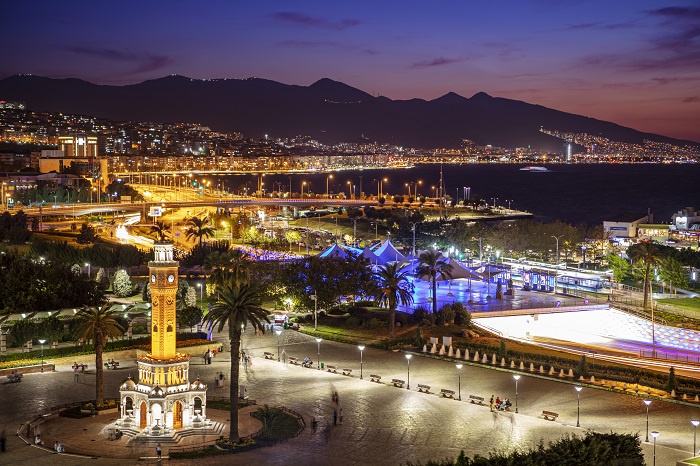Visitors of the Izmir Marble Fair will have the opportunity to explore more than the exhibits. The history-rich city of Izmir offers a plethora of architectural and historical monuments that tell the story of the city’s 8,500-year-old existence.
Dating back to the third millennium BCE, Smyrna is one of the oldest cities with continuous settlements and one of the oldest port cities of the Mediterranean Sea, with 3,500 years of urban history that includes a rich and multi-cultural past.
 Smyrna derived its wealth through the income generated from fertile agricultural fields that provided a wide variety and surplus of products and exporting products and the goods arriving from other cities in the province and flowing unto the Mediterranean through Izmir’s port. With its advantageous location, as the intersection between the East and the West, the city became a significant factor in interlacing arts and culture.
Smyrna derived its wealth through the income generated from fertile agricultural fields that provided a wide variety and surplus of products and exporting products and the goods arriving from other cities in the province and flowing unto the Mediterranean through Izmir’s port. With its advantageous location, as the intersection between the East and the West, the city became a significant factor in interlacing arts and culture.
Founded between the Pagos Hill (Kadifekale) and the inner port around the late 4th century – early 3rd century B.C. in the post-Alexander era, Smyrna still bears the traces of the Hellenistic, Roman, Byzantine, Principalities (Beylik) and the Ottoman period. Moreover, archaeological excavations in the city revealed the Euro-Asian silk road that offered a trade portal to the Mediterranean during the Classical Era.
While the city was under the governance of the Ottoman Empire in the 17th century, it became a major international port and attracted significant overseas business. Along with the developing trade, Levantines, Greek Orthodox, Armenian, Jewish, and Muslim Turks inhabited the area, amplifying the diversity of the population and forming a city of tolerance. As a result, Smyrna, now known as Izmir, became one of the most advanced civilizations of its time, along with ancient Troia, in Western Anatolia.
The monuments found in Izmir, and other surrounding cities, also reveal the country’s variety of natural stones. Turkey’s rich marble reserves include more than 120 colours and 80 different forms. The most famous types in the international market are Süpren, Elazığ Cherry Red, Akşehir Black, Manyas White, Bilecik Beige, Tiger Skin, Denizli Travertine, Aegean Maroon, Milas Lilac, Gemlik Diabase and Afyon Sugar. The internationally recognized marble varieties also attract an ethnically diverse audience and visitor list.
The ancient historian Herodotus, referring to the city, wrote: “They built their city under the loftiest dome of heaven and the best climate in the world.” Aristotle told his student Alexander the Great, “You are not complete unless you have seen it.” Victor Hugo describes the city as “İzmir is a princess adorning a necklace.” The visitors are more than encouraged to explore the city and see how accurate those ancient statements are.










































